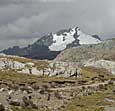
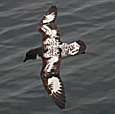
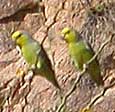


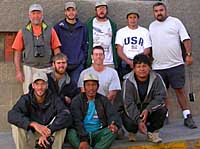
From 19 September to 14 October, 2003, five Gringos (Jeff, Derb, Harry, Daniel, and Blan) hired the Birding Peru company to lead us on the Northern Peruvian birding adventure of a lifetime!
The Participants:
Daniel Bouffard - Quebec, Canada
Derb Carter - NC, USA
Blan Holman - NC, USA
Harry LeGrand - NC, USA
Jeffrey Pippen - NC, USA
Birding Peru took care of all the logistics of travel, food, and lodging, and supplied two very sturdy 4WD Diesel Toyota Land Cruisers, tents, and 5 personnel:
Gregorio "Goyo" Ferro Meza -- Birding Peru Manager
David Geale -- Bird Guide extroardinaire (contracted from Tanager Tours)
Lucho Nuñez -- Driver and Master Storyteller
Julio Ccahuana -- Driver and Mechanic
Juan Malaga -- Senior Chef and Camp Cook
 |
 |
 |
 |
 |
BIRDS: The trip was an overwhelming success from a birding standpoint, tallying 687 species of birds:
BUTTERFLIES: Peru butterflies were phenomenal! I was able to photograph about 90 species, including skippers, and they're featured here:
ITINERARY: Click on each link below to take you to the photo tour for each section of the trip.
I took over a thousand digital photos and have done my best to cull it down to the pics presented in these web pages. All photos were taken with a Nikon CoolPix 4500 digital camera and are copyrighted 2003 by Jeffrey Pippen.
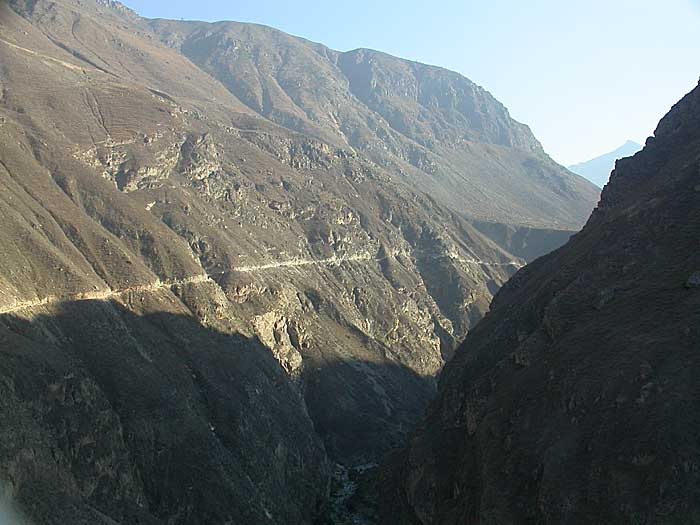 |
We arrived in the Lima airport around 4:40am, loaded into Lucho's Land Cruiser, and immediately drove up into the Santa Eulalia Valley east of Lima. This first day we birded the valley up to around 10,000 feet elevation. Much of the Western Andes in Peru are very arid. Notice the lack of trees and notice that cream etch mark in the side of the mountain is our road! |
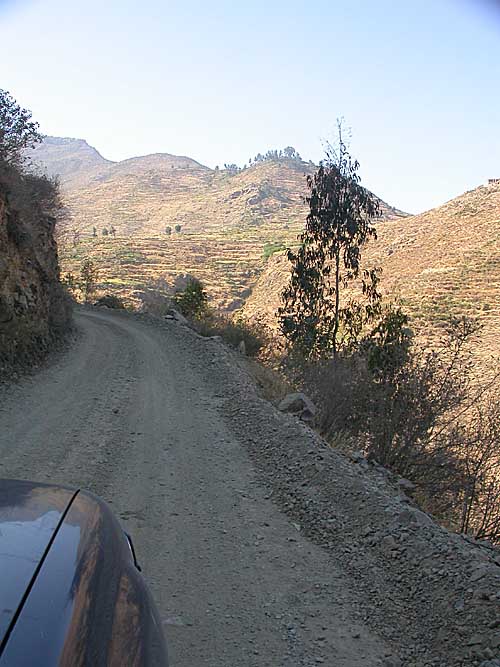 |
Here's a typical view from inside the car. All the mountain roads are one lane, but two-way. Of course, there are no guard rails and the edge of the road is often crumbling away to the valley floor hundreds of feet below. |
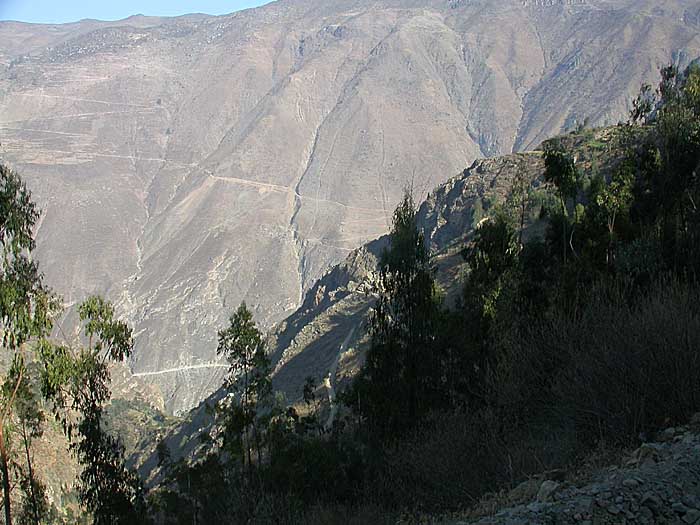 |
A view of our road winding to the upper left from across the valley. |
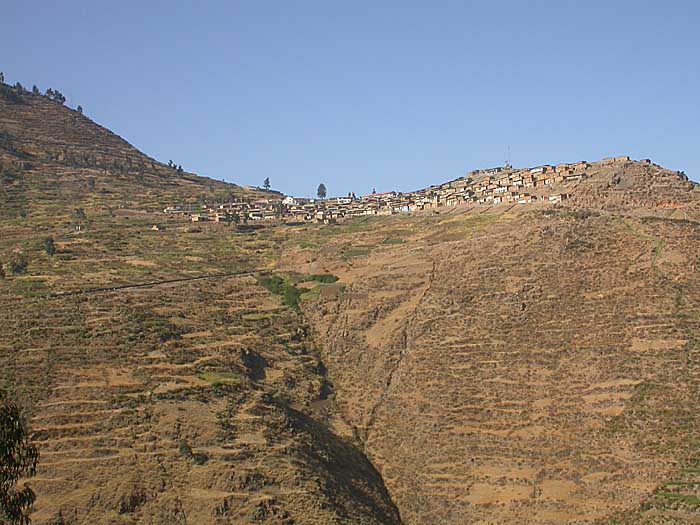 |
The town of San Pedro de Casta, where we spent our first night in Peru. The large white building left of center is our hotel. |
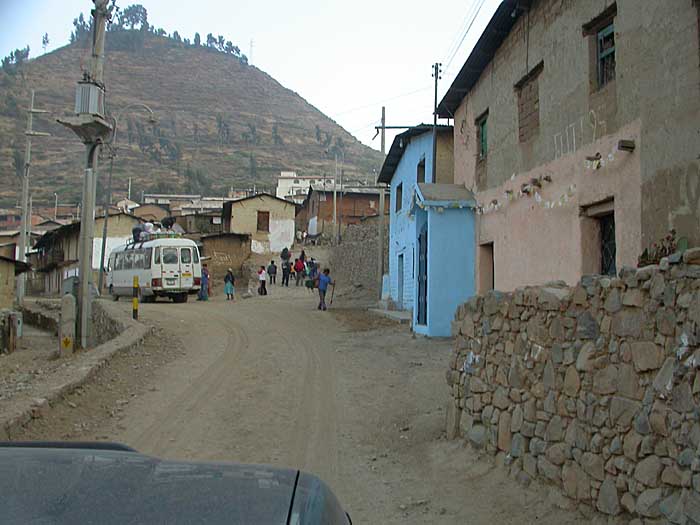 |
Driving into town on the main road. |
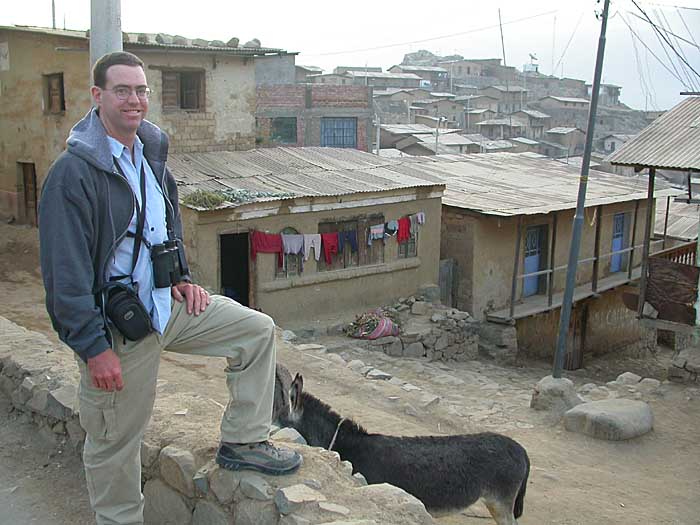 |
Standing with my ass at the edge of the hotel parking lot, overlooking the town . . . |
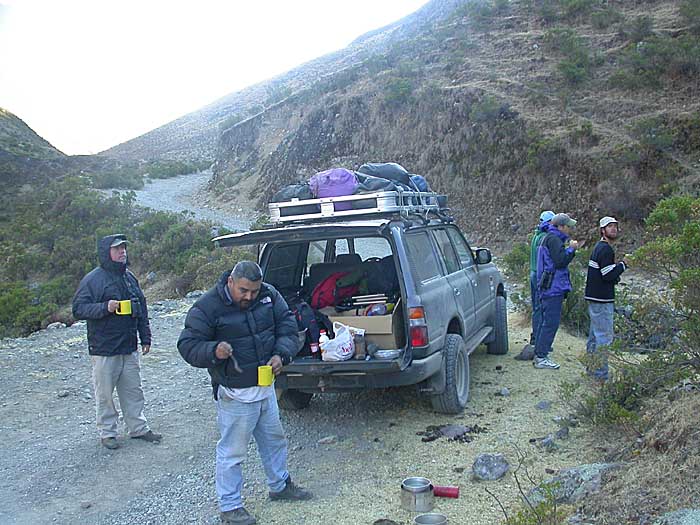 |
Our breakfast spot the morning of the 20th was around 12,000' elevation at a patch of Polylepis, a native tree of the high elevation Andes. A special set of bird species (e.g. Giant Conebill and Tit-like Dacnis)are associated with Polylepis forests. |
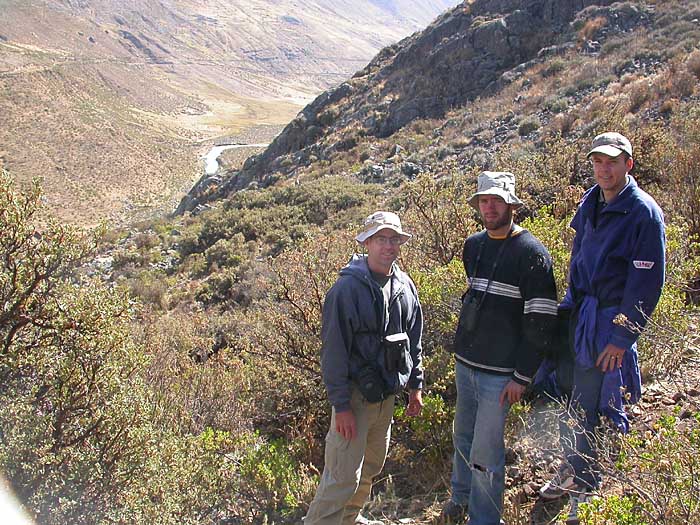 |
Birding the edge of the Polylepis patch above the car. |
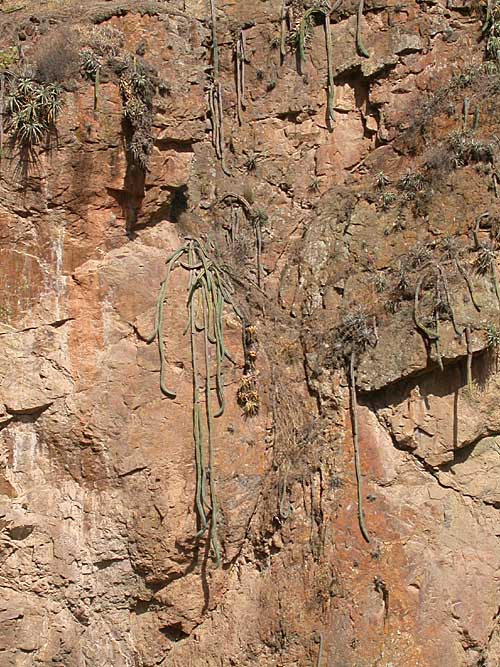 |
I took this photo across the river valley of several hanging cacti (several meters long) on the cliff face. |
 |
Typical road birding. |
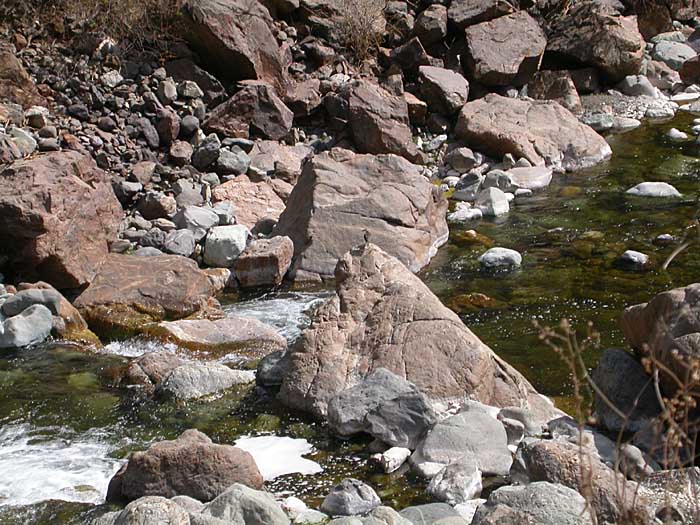 |
A view of the river in the valley. Lots of cool birds along this river including Torrent Duck, seen here perched atop the pointy boulder in the middle. |
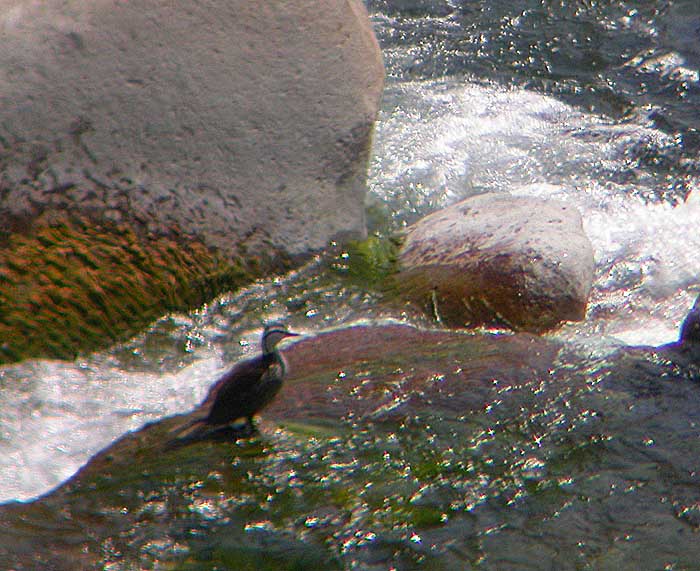 |
Here's a blurry zoomed in photo of a Torrent Duck. (My camera is much better at macro than telephoto shots!) |
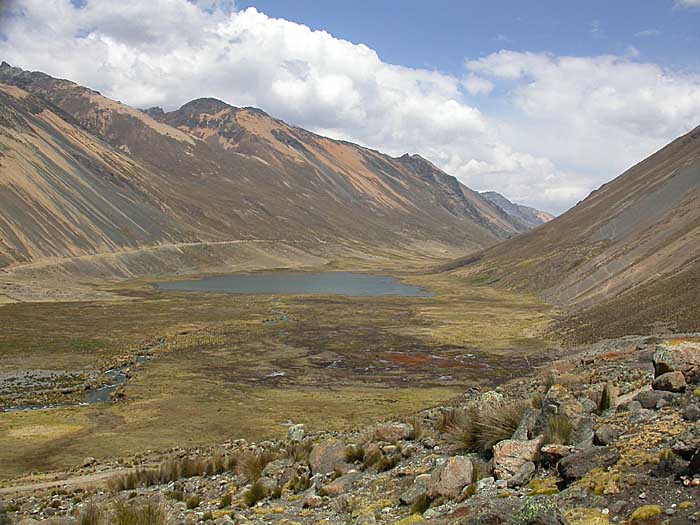 |
A neat lake nestled high in the Andes. Got several life birds here including Andean Duck, Andean Goose, Speckled Teal, Crested Duck, Giant Coot, Andean Coot, and Andean Lapwing. |
 |
Here's my lifer Andean Geese! |
 |
This highly endemic and endangered bird is the White-bellied Cinclodes, known only from a few locations in Peru. Less than 50 individuals are known to exist! |
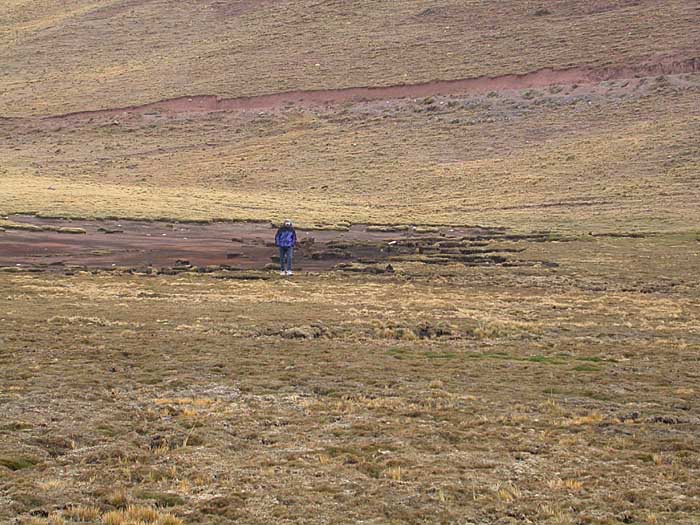 |
Dan is walking in a "cushion bog", around 4600m in elevation. This unique habitat is home to some very rare birds, including the above cinclodes, Diademed Sandpiper-Plover, which we found here, and Olivaceous Thornbill (see below). A serious threat to this habitat (and thus the existence of these bird species) is the uncontrolled mining of peat in these bogs. The large muddy area that Dan's walking the edge of was recently dug up and harvested. |
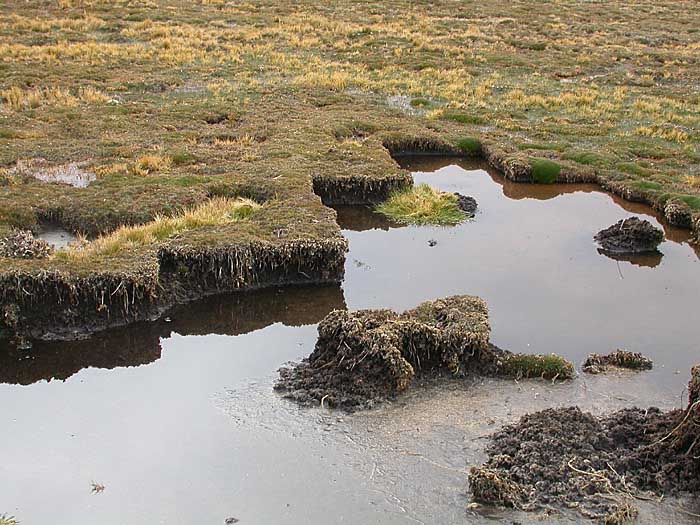 |
Close-up of peat mining aftermath. Note the squared-off shovel marks. |
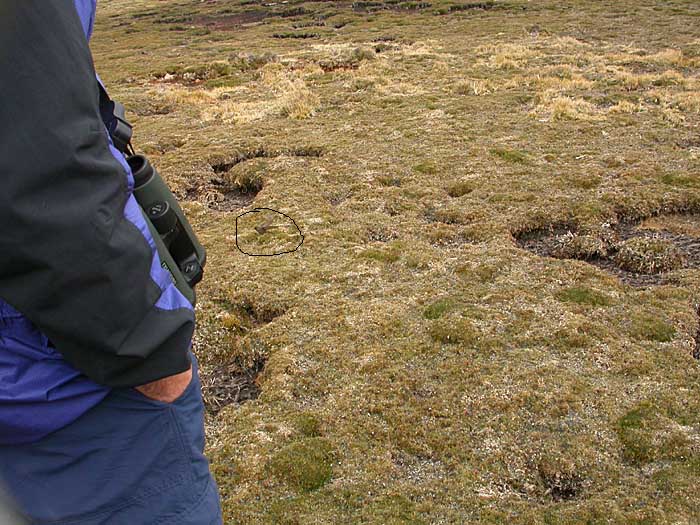 |
One of the coolest birds of the trip was this Olivaceous Thornbill -- a hummingbird that seemed to "hop" on the ground feeding on little red flowers a few inches high. (Note, the bird didn't actually hop; it flew a few inches at a time from flower to flower and grasped the nearby vegetation while sipping nectar.) Note how close the bird came to us! |
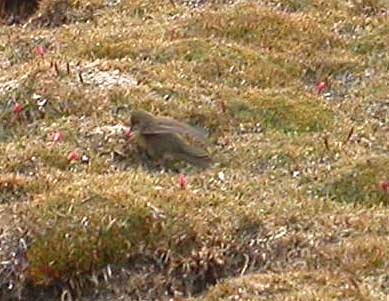 |
Olivaceous Thornbill |
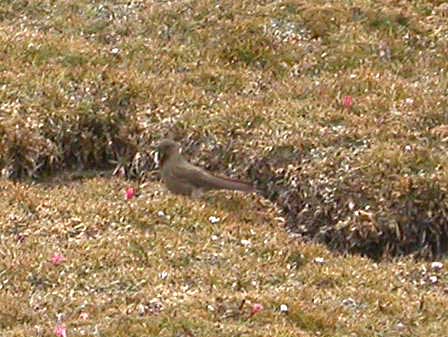 |
Check out the green and red in the gorget. |
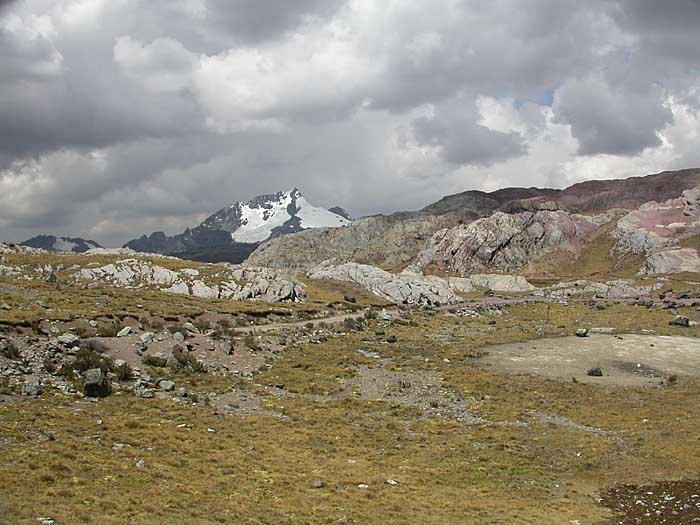 |
This snow-capped peak, named Widow Peak, is part of the Cordillera Blanca range of the Western Andes. Widow Peak reaches over 6100m (20,000 feet) high! |
Created on ... October 22, 2003 | Updated on ... August 1, 2005 | Back to Jeff's Nature Page | jeffpippen9@gmail.com